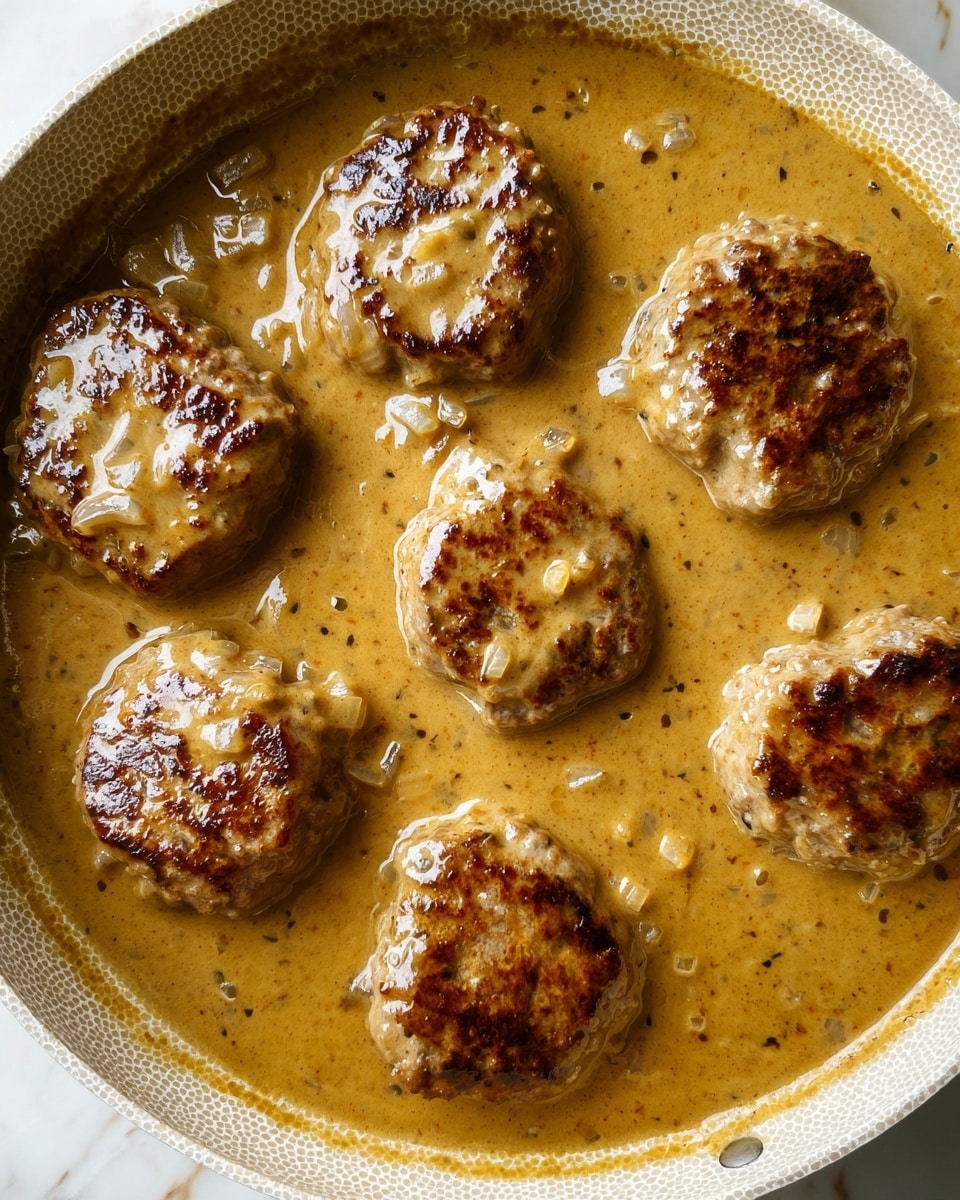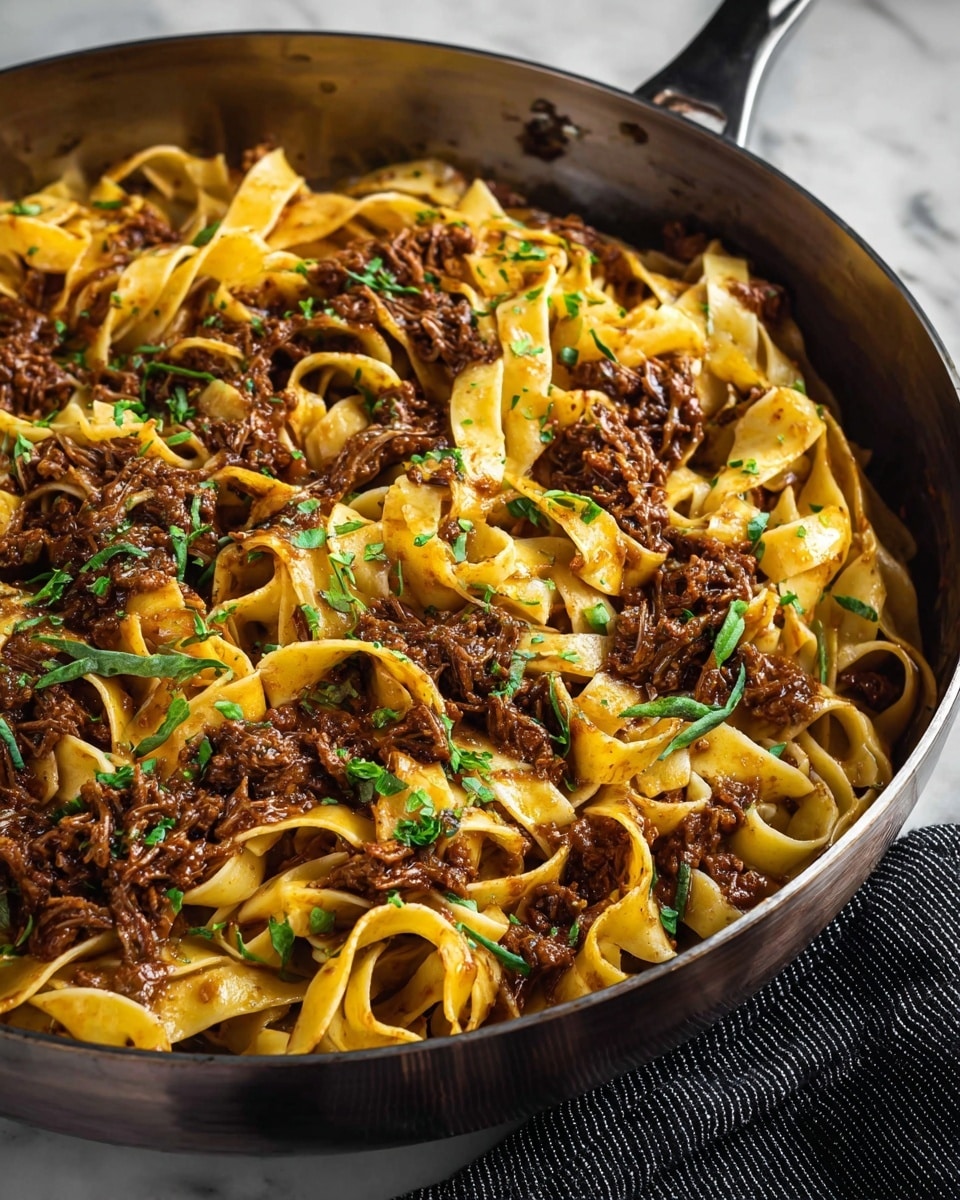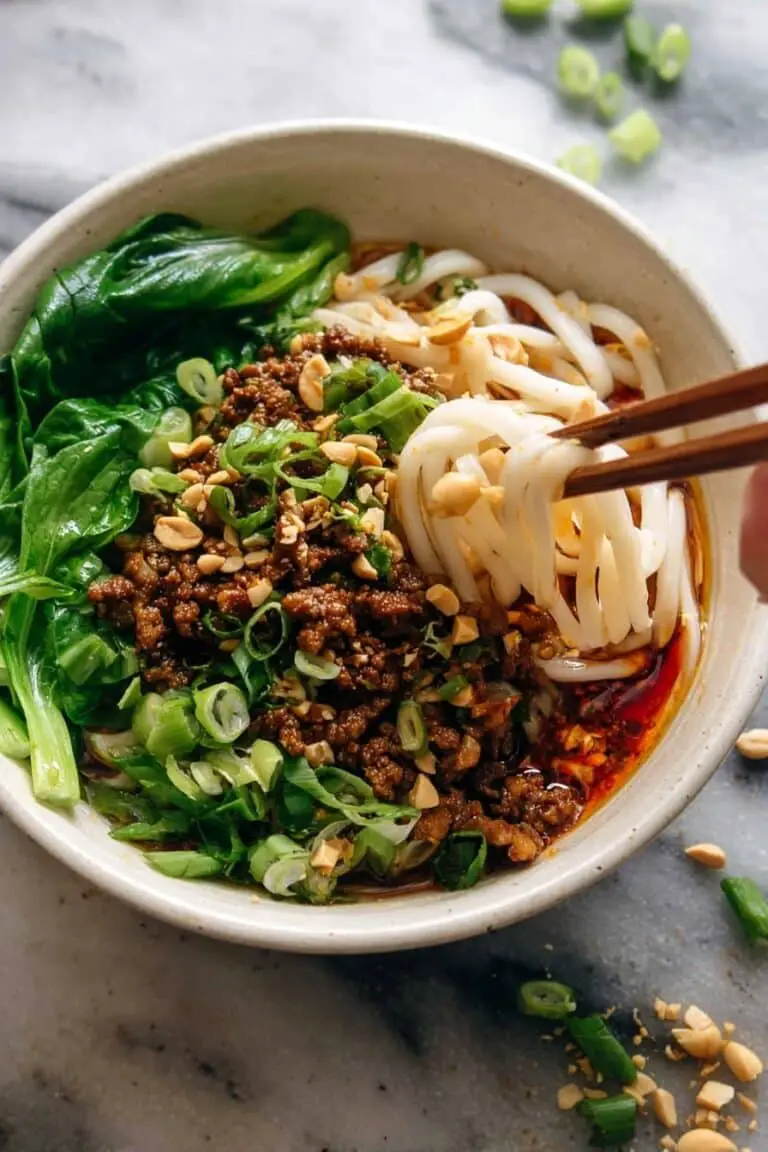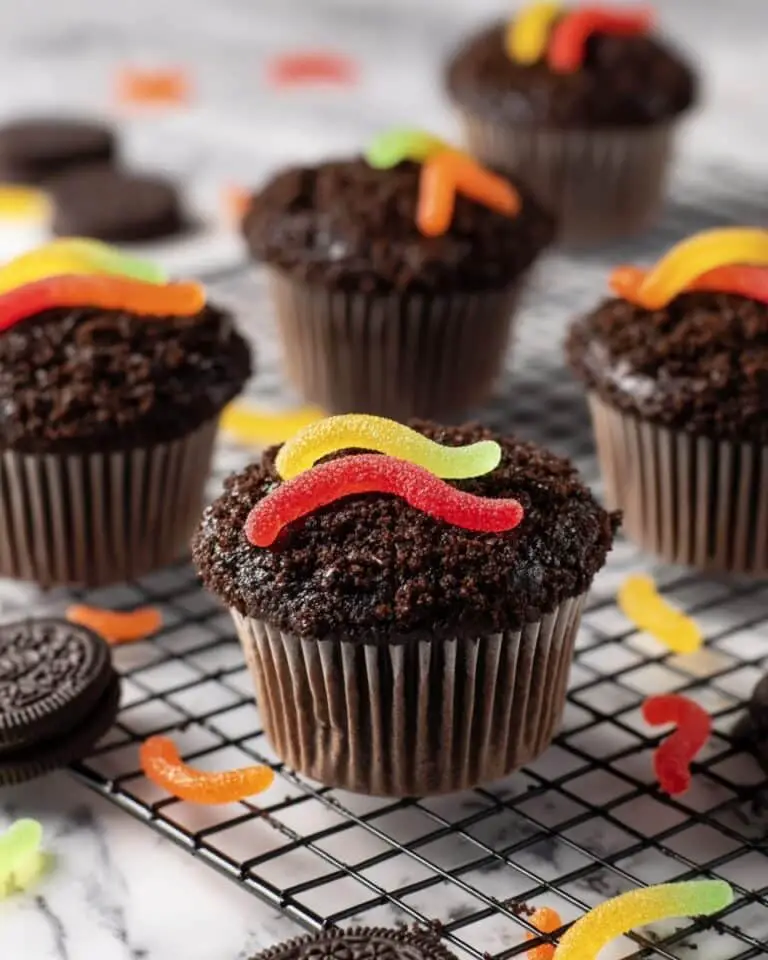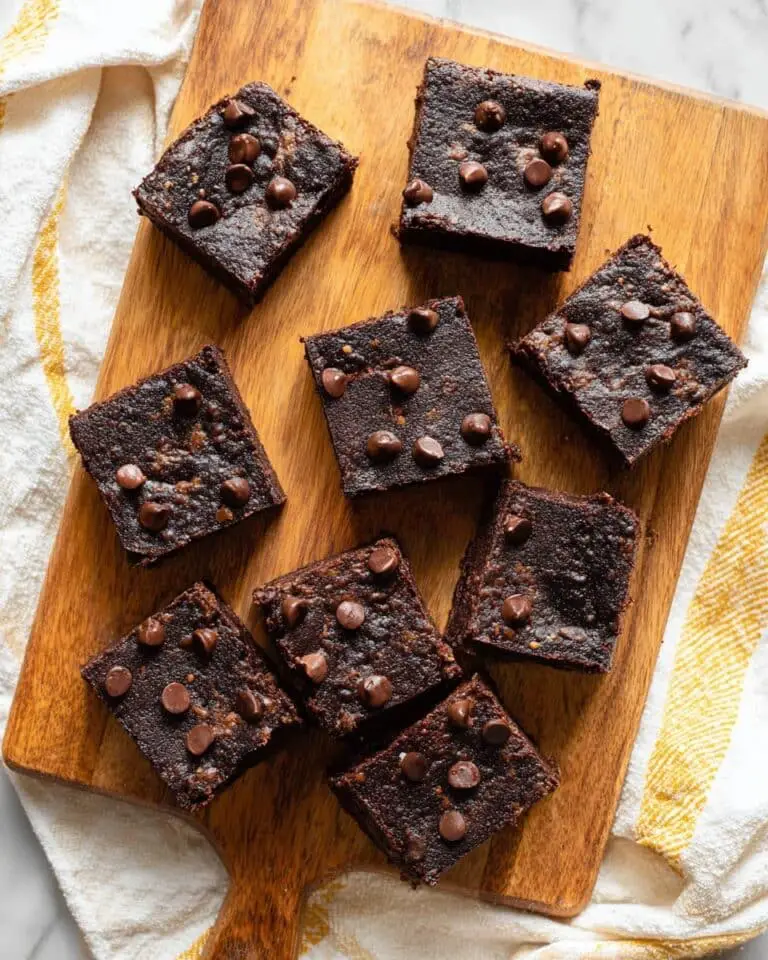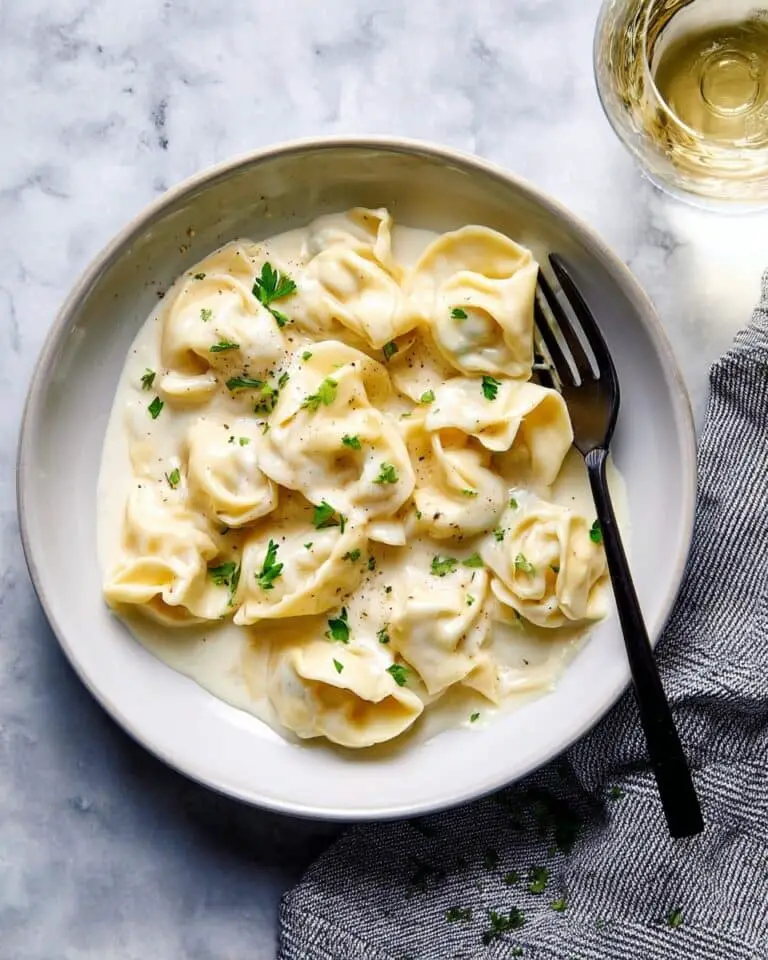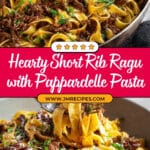I absolutely love making this Short Rib Ragu with Pappardelle Recipe because it transforms humble ingredients into a dish that feels like a special occasion every time. The slow-cooked short ribs melt into a rich, velvety sauce that clings beautifully to wide ribbons of pappardelle pasta—the perfect comfort food to enjoy on cozy weekends or when you want to impress without hours of fuss. You’ll find that the deep flavor from the red wine and herbs really makes this ragu sing in a way that’s rewarding and satisfying.
When I first tried this recipe, I was amazed at how versatile it is. Whether it’s a family dinner or a meal to share with friends, this Short Rib Ragu with Pappardelle Recipe delivers consistent wow-factor. Plus, it’s a great make-ahead option, so you can prep it in advance, letting all those flavors mingle overnight. Trust me, once you try it, it’ll become a go-to dish in your busy kitchen.
Why You’ll Love This Recipe
- Deep, Rich Flavor: The slow simmering process unlocks incredible, tender meat and a sauce bursting with layered tastes.
- Comfort Food at Its Best: Thick pappardelle pasta coated in luxurious ragu makes every bite satisfying and hearty.
- Great for Make-Ahead Meals: The ragu tastes even better the next day, perfect for prepping ahead to save time.
- Versatile Use: Beyond pasta, this ragu can be your secret ingredient for polenta, ravioli filling, or even topping veggies.
Ingredients You’ll Need
I’ve gathered ingredients that work harmoniously to create a silky, hearty ragu while keeping it simple enough for any home cook. A good quality short rib and fresh vegetables balance richness with freshness perfectly.
- Beef short ribs: De-boned and cut into cubes for easier shredding and perfect slow-cooking results.
- Light olive oil: Or use avocado or vegetable oil for searing; helps develop a flavorful crust on the ribs.
- Kosher salt: Essential for seasoning each step and enhancing all the flavors.
- White onion: Finely diced for a sweet, fragrant base that melds beautifully into the sauce.
- Celery: Adds subtle earthiness and texture, finely chopped to blend invisibly into the ragu.
- Carrot: For natural sweetness and color, balancing the acidity of tomatoes and wine.
- Garlic cloves: Minced finely to infuse the sauce with savory depth.
- Tomato paste: This boosts the tomato flavor and thickens the sauce nicely.
- Red wine: A key for deglazing and creating that rich, complex flavor profile.
- Broth (beef or chicken): Adds savory juices to keep the ragu moist and intense in flavor.
- Crushed tomatoes: The tomato base for the sauce, lending acidity and body.
- Herb bundle: Rosemary, thyme, and parsley stems give aromatic complexity during the long simmer.
- Bay leaves: For subtle herbal notes that deepen the sauce.
- Sherry or red wine vinegar: Just a splash to brighten and balance richness at the end.
- Pasta (tagliatelle or pappardelle): Thick ribbons hold the sauce beautifully, making every mouthful decadent.
- Chopped parsley & Parmigiano Reggiano: Fresh garnishes that add color, texture, and umami at the finish.
Variations
One of the things I love most about this Short Rib Ragu with Pappardelle Recipe is how easily you can tweak it to your tastes or dietary needs. Feel free to experiment with different herbs or try the ragu over various bases to find what feels right in your kitchen.
- Use bone-in short ribs: I’ve tried this when I wanted an even richer flavor; just pull the bones carefully before shredding the meat.
- Swap beef for lamb or pork: My adventurous guests loved the lamb version, and it gave the ragu a unique twist.
- Make it gluten-free: Swap pappardelle for gluten-free pasta or creamy polenta for a cozy variation.
- Add spice: If you like heat, toss in some red pepper flakes when sautéeing veggies for a little kick.
How to Make Short Rib Ragu with Pappardelle Recipe
Step 1: Sear the Short Ribs to Lock In Flavor
Season the short ribs generously with kosher salt and heat your olive oil in a heavy-bottomed braiser or Dutch oven over medium-high heat. I like to do this in batches so the meat gets a beautiful, golden crust instead of steaming in the pot. Make sure not to crowd the pan, as searing is what gives the ragu its deep, savory base. Once all pieces have a nice crust, transfer them to a plate. If your pot has more than two tablespoons of fat left, drain some off—too much can make the sauce greasy.
Step 2: Build the Flavor Base with Vegetables
In the same pot (don’t clean it — those brown bits are gold!), add diced onion, celery, carrot, and minced garlic. Sauté them on medium-high heat for about 3 to 4 minutes until the onion softens and everything smells fragrant. This mix will add natural sweetness and texture to your sauce, balancing the richness of the meat beautifully.
Step 3: Tomato Paste and Deglaze with Red Wine
Stir in the tomato paste along with a teaspoon of salt and half a teaspoon of cracked pepper. Let it cook for a couple of minutes to deepen the tomato flavor before pouring in the red wine. This step, known as deglazing, lifts all the flavorful bits stuck to the bottom and blends them into the sauce, giving your ragu an amazing depth you won’t want to miss.
Step 4: Simmer with Broth, Tomatoes, and Herbs
Return the seared short ribs back to the pot and pour in the broth and crushed tomatoes. Add your herb bundle—rosemary, thyme, parsley stems—and bay leaves. Bring everything just to a low simmer, cover with the lid slightly ajar, and let it cook gently for 2 to 2 ½ hours. The key here is patience: low and slow is what makes your ribs tender enough to fall apart.
Step 5: Shred and Final Seasoning
Once the ribs are fork-tender and effortlessly pull apart, remove the bay leaves and herb bundle. If you used boneless ribs, shredding right in the pot with two forks is a breeze. With bone-in ribs, remove the bones first—just be careful with cartilage, which some folks prefer to discard. Finish by tasting and seasoning with more salt, pepper, and a splash of sherry or red wine vinegar to brighten the sauce. If you want it thicker, just let it simmer a bit longer uncovered.
Step 6: Serve with Pappardelle and Garnish
Cook your pappardelle pasta according to package instructions until al dente. I always reserve a bit of pasta water to loosen the sauce if needed. Toss your rich ragu with the pasta, sprinkle with freshly chopped parsley and generous shavings of Parmigiano Reggiano. The result? A dish that feels luxurious but is totally doable any day you want to treat yourself or your people.
Pro Tips for Making Short Rib Ragu with Pappardelle Recipe
- Don’t Rush the Searing: Taking your time to get a nice crust dramatically improves flavor; it’s absolutely worth it.
- Use a Heavy Pot: A Dutch oven or braiser helps maintain consistent heat and prevents burning during long cooking.
- Adjust Liquid Levels: Check occasionally to add broth or water if the sauce is drying out too fast, keeping the meat juicy.
- Reserve Pasta Water: This starchy water is magic for loosening the sauce without watering it down.
How to Serve Short Rib Ragu with Pappardelle Recipe
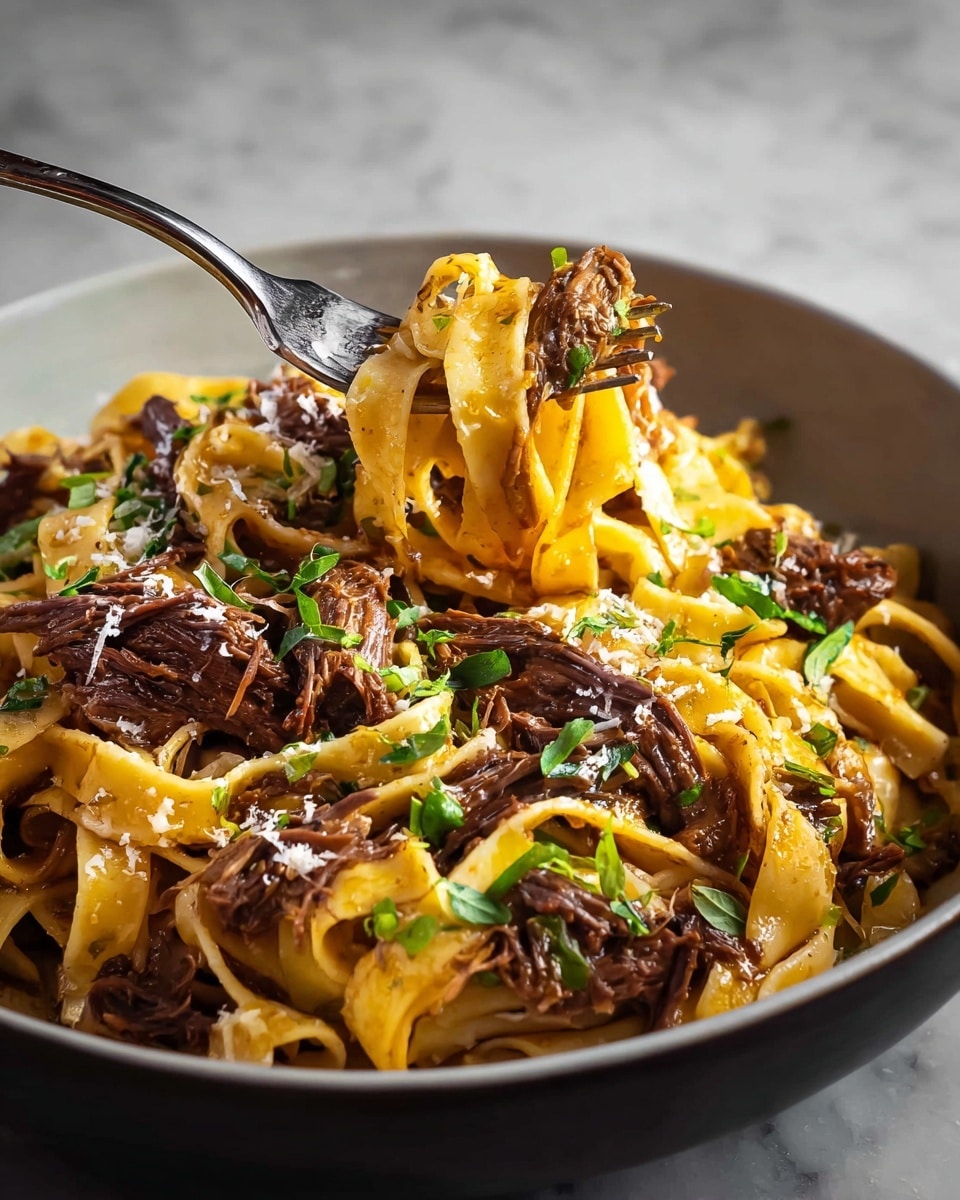
Garnishes
I always top this dish with fresh chopped parsley for a burst of color and brightness. And a generous handful of freshly grated Parmigiano Reggiano adds that salty, nutty umami finish that complements the ragu’s richness perfectly. Sometimes I even throw on a few crunchy toasted pine nuts for texture when I’m feeling fancy.
Side Dishes
My go-to sides are a crisp arugula salad dressed simply with lemon and olive oil to cut through the richness, and crusty garlic bread to soak up every last bit of sauce. Roasted seasonal vegetables like asparagus or Brussels sprouts are another fantastic match to round out the meal.
Creative Ways to Present
For a special dinner, I like to serve this ragu in individual shallow bowls with twirls of pappardelle piled high, garnished with herb sprigs and freshly cracked black pepper. You could also arrange it over creamy polenta in a wide dish, topped with a sprinkle of aged pecorino for a rustic, yet elegant presentation that impresses every time.
Make Ahead and Storage
Storing Leftovers
I usually store leftover ragu in airtight containers in the fridge for up to 4 days. The flavors continue to develop, making it taste even better the next day—which honestly makes a great lunch or quick dinner. Just keep the pasta separate to avoid it getting mushy.
Freezing
Freezing this ragu works wonderfully for meal prep. I portion out into freezer-safe containers and it lasts up to 3 months. When I want a comforting meal on a busy night, I just thaw overnight in the fridge and reheat gently on the stove.
Reheating
To reheat, I warm the ragu gently over low heat, stirring occasionally to prevent sticking and adding a splash of broth or water if needed to loosen the sauce. This keeps the meat tender and the texture silky—no one suspects it’s leftover!
FAQs
-
Can I use bone-in short ribs for this recipe?
Absolutely! Bone-in short ribs add extra depth of flavor during cooking, though you’ll need to carefully remove the bones before shredding the meat. Just watch out for cartilage if you prefer not to include it in your ragu.
-
What pasta works best with Short Rib Ragu?
Wider, thicker noodles like pappardelle, tagliatelle, or rigatoni are perfect because their shape helps hold onto the rich sauce. I highly recommend pappardelle for the ultimate comforting bite!
-
Can I make the ragu ahead of time?
Yes! This ragu tastes even better the next day as the flavors meld beautifully. You can prepare it a day or two in advance and simply reheat gently before serving.
-
What if I don’t have red wine?
You can substitute the red wine with extra broth or a splash of grape juice mixed with a little vinegar to maintain acidity. The flavor will be slightly different, but still delicious.
-
How do I know when the short ribs are done?
They’re ready when the meat is fork-tender and easily pulls apart with a fork—usually between 2 and 2 ½ hours of simmering. If it’s not quite there, just keep cooking and check every 15 minutes.
Final Thoughts
This Short Rib Ragu with Pappardelle Recipe is one of those dishes I happily make over and over again because it hits all the right notes—comforting, flavorful, and surprisingly simple to pull off. If you want to impress your family or friends with a homemade meal that tastes like it came from an Italian trattoria, this is the recipe to try. I promise you’ll love it as much as we do in our kitchen!
Print
Short Rib Ragu with Pappardelle Recipe
- Prep Time: 30 minutes
- Cook Time: 3 hours
- Total Time: 3 hours 30 minutes
- Yield: 6 servings
- Category: Main Course
- Method: Stovetop
- Cuisine: Italian
Description
This rich and comforting Short Rib Ragu features tender, fall-apart beef short ribs simmered slowly with aromatic vegetables, red wine, and tomatoes. Served best over hearty pasta like pappardelle or tagliatelle, this dish makes for a perfect cozy meal full of deep, complex flavors.
Ingredients
Meat
- 2 lbs Beef short ribs – De-boned, cut into 2″ (5cm) cubes
Vegetables & Aromatics
- 1 cup White onion – Finely diced
- 1/2 cup Celery – Finely diced
- 1/2 cup Carrot – Finely diced
- 4 Garlic cloves – Finely minced
Liquids & Cans
- 2 tbsp Light olive oil (or vegetable or avocado oil)
- 1 cup Red wine
- 1 cup Broth – Beef or chicken
- 1 3/4 cup Crushed tomatoes – 14oz can
- 2 tbsp Sherry or red wine vinegar
Seasonings & Herbs
- Kosher salt
- Fresh cracked pepper
- 2 tbsp Tomato paste
- Herb Bundle – Rosemary, thyme, parsley stems
- 2 Bay leaves
To Serve
- 1 lb Pasta – Tagliatelle or pappardelle
- Chopped parsley for garnish
- Grated Parmigiano Reggiano for garnish
Instructions
- Season the meat: Generously season the beef short ribs on all sides with kosher salt to enhance flavor before cooking.
- Sear the short ribs: Heat 2 tablespoons of light olive oil in a large braiser or Dutch oven over medium-high heat. Sear the short rib cubes on all sides in batches without crowding the pot, until browned. Remove and set aside. Drain excess grease, leaving no more than 2 tablespoons in the pot.
- Sauté vegetables: Add the onion, celery, carrot, and garlic to the pot. Sauté over medium-high heat for 3-4 minutes until the onion softens and the mixture is fragrant.
- Add tomato paste and seasoning: Stir in the tomato paste, 1 teaspoon kosher salt, and ½ teaspoon fresh cracked pepper. Cook for 2-3 minutes to develop the tomato paste flavor.
- Deglaze with red wine: Pour in the red wine and scrape the browned bits from the bottom of the pot to enhance the sauce depth.
- Add short ribs and liquids: Return the seared short ribs to the pot. Add the broth and crushed tomatoes, stirring to combine.
- Add herbs and simmer: Add the herb bundle (rosemary, thyme, parsley stems) and bay leaves. Bring to a low simmer, cover with the lid slightly ajar, and cook for 2 to 2½ hours. Stir occasionally and add broth or water if the sauce reduces too much.
- Check for tenderness: The ribs are done when very tender and falling apart. If needed, simmer up to an additional 30 minutes for desired tenderness.
- Shred the meat: Remove and discard the bay leaves and herb bundle. Using forks or tongs, shred the boneless short ribs directly in the pot, or carefully remove bones before shredding if using bone-in ribs. Remove cartilage if desired.
- Adjust seasoning: Taste the ragu and adjust salt and pepper. Stir in the sherry or red wine vinegar. If the sauce is too thin, continue simmering uncovered for another 15-30 minutes to thicken.
- Cook pasta and serve: Cook pasta according to package instructions. Serve the ragu over pasta and garnish with chopped parsley and grated Parmigiano Reggiano.
Notes
- See the blog post for detailed, step-by-step photos of this recipe process.
- Deboned short ribs cubed are preferred for convenience, but bone-in ribs add more flavor.
- Stewing beef cubes can be used as a more affordable alternative.
- This ragu is versatile: serve with pasta, polenta, as ravioli filling, in lasagna, with roasted vegetables, or even over hummus.
- Recommended pasta types are hearty and thick such as pappardelle, tagliatelle, orecchiette, rigatoni, and cavatelli.
Nutrition
- Serving Size: 1 serving (approx. 1/6th of recipe with pasta)
- Calories: 550 kcal
- Sugar: 6 g
- Sodium: 600 mg
- Fat: 25 g
- Saturated Fat: 8 g
- Unsaturated Fat: 15 g
- Trans Fat: 0 g
- Carbohydrates: 40 g
- Fiber: 5 g
- Protein: 40 g
- Cholesterol: 110 mg

